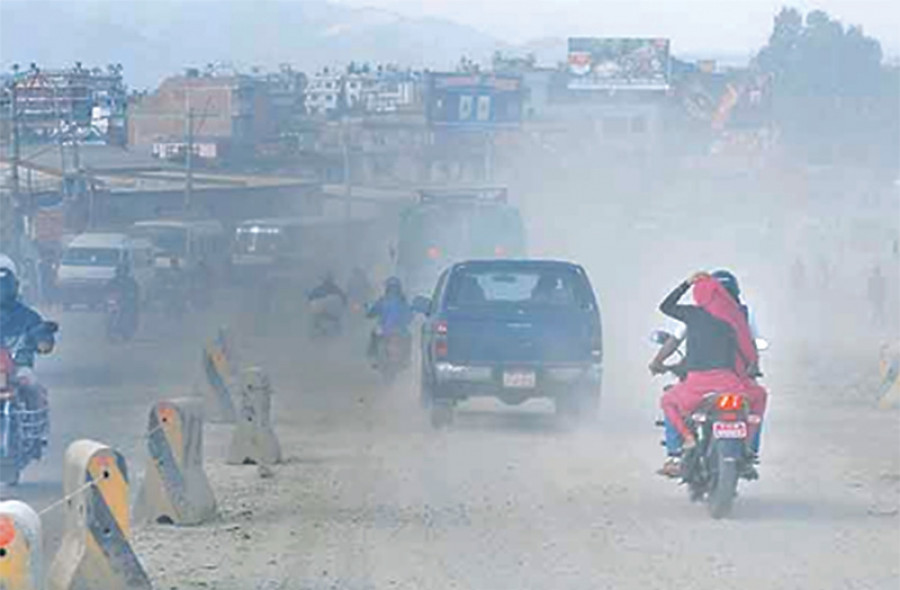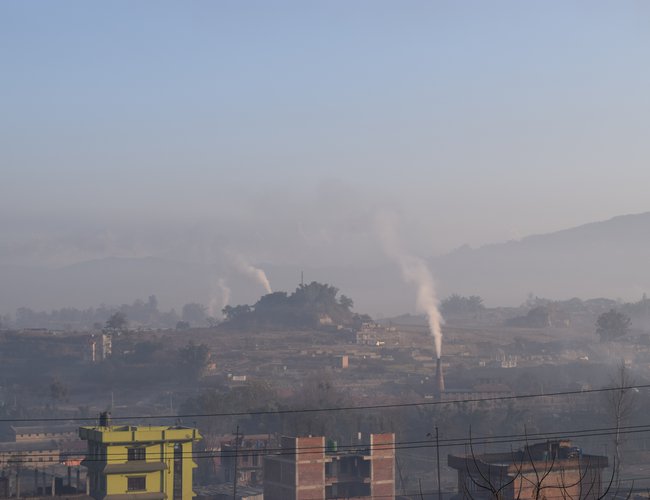
The worsening air quality has become a leading threat to public health in the Kathmandu Valley. Poorly managed road expansion, poisonous gases emitted by motor vehicles and pipe laying works for the Melamchi Water Supply Project across the Valley have invited negative impacts on the environment and public well-being.

Contamination of the air has harmed not only human beings but also vegetation and animals. Residents in the capital cannot walk on the streets without a scarf around their face because of dust and filthy air. The air in the Valley has deteriorated so much that it is not safe even to breathe.
Due to the polluted environment, people have become prone to eye irritation, lung cancer, respiratory problems, skin disease and even premature death. However, developers, planners and environmental organisations have not shown any interest in improving the air quality.
I try to refrain from stepping outdoors because of the toxic level of air pollution. I step out only when it is bright and sunny. Sometimes, you cannot even recognise the people on the street because of the dust, like happened at Balkhu recently. I also felt suffocated due to the dust blown by vehicles in the area. It’s like you have two options: Stop breathing, which is not possible, or quit Kathmandu, which is also not probable. By observing the hazardous environmental condition of the air, I feel that the Valley has turned into a gas chamber. In order to fight this problem, the government of Nepal started collecting a tax of half a
rupee per litre of gasoline since 2007, but it does not seem to have much interest in mitigating air pollution.
The biggest reason behind air pollution is human activities. Over-population, urbanisation, open waste burning, brick kilns and smoking are the major contributors. Because of the failure of the government to properly utilise the tax collected to create a fresh environment, violation of the air has triggered a severe health crisis. Among all health risks, air pollution is the fourth-highest cause of death. Children are the worst affected by the unhealthy atmosphere of the capital city. Breathing the air in Gwarko, Koteshwor, Balkhu and Kalanki is equivalent to smoking a cigarette.
To mitigate air pollution, the government should impose a ban on open waste burning and using harmful chemical products inside and outside the home. Pollution needs to be fought on a war footing with strong rules and penalties. The collected tax should be spent only on programmes related to lessening pollution. Promoting the use of electric vehicles is one of the best ways to improve the air quality. Anti-smog guns are also useful to maintain a fresh environment.
Comment